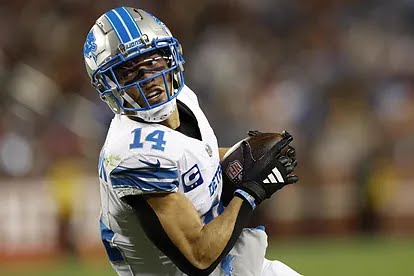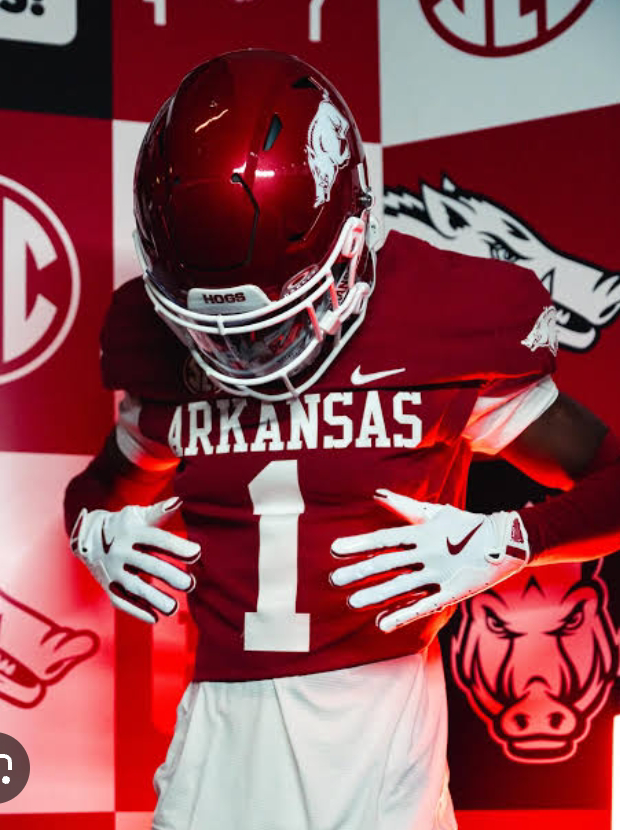Amon-Ra St. Brown, one of the brightest young stars in the NFL, has made headlines recently not just for his performances on the field but also for his outspoken stance on a controversial NFL rule. The Detroit Lions wide receiver, who has quickly become one of the league’s most reliable and dynamic players, is calling on the NFL to reexamine a rule that he considers one of the most “crazy” and “unfair” in the sport: the **”Injury Report” rule** and the **”Limited Participation” classification**.
In a recent interview, St. Brown shared his frustrations with the rule, which can have significant ramifications for both players and teams. While many fans are familiar with the injury report updates throughout the week leading up to games, St. Brown’s comments shed light on an aspect of the rule that may not always be apparent to the casual viewer. Let’s take a closer look at why Amon-Ra St. Brown believes the NFL needs to make a change, and what this rule entails.
### The Injury Report Rule: A Brief Overview
Injuries are a part of the game in any contact sport, and football is no exception. The NFL has strict guidelines for how teams must report injuries throughout the week leading up to each game. These updates include the **status of injured players** (i.e., whether they are probable, questionable, doubtful, or out), as well as the **level of participation** during practice. This rule is designed to ensure that teams, players, and fans have a clear understanding of who might or might not be available for the upcoming game.
However, the specifics of the rule, especially the **”limited participation” classification**, have become a point of contention for some players, including Amon-Ra St. Brown. The issue arises when players are listed as “limited” in practice, even if they are able to participate fully or nearly fully in a practice. For example, a player might be classified as “limited” if they don’t participate in every drill during practice or if they are held out of a specific session for precautionary reasons. This can have serious consequences, both for the player’s standing on the team and for how opponents approach game planning.
### St. Brown’s Frustration: “One of the Craziest Rules Out There”
Amon-Ra St. Brown’s frustration with this rule stems from the impact it has on both **player development** and **team strategy**. In his view, the rule doesn’t accurately reflect the player’s actual readiness to compete, and it forces teams to give unnecessary updates that don’t always provide a true picture of a player’s health.
**”The rule is just crazy. There’s so much ambiguity around it, and it ends up hurting players,”** St. Brown said. **”I might be out there practicing and looking fine, but if I’m listed as ‘limited’ because I didn’t take a certain number of reps, it makes things a lot more complicated than they need to be.”**
St. Brown went on to emphasize that it often creates unnecessary stress for players and coaches. Players who are genuinely injured and need rest or treatment should be clearly categorized as “out,” but players who are capable of playing but have been simply held out of certain drills don’t always need to be listed as “limited.”
This becomes particularly problematic during the **game planning** process. Opposing teams often rely on the injury reports to gain a competitive advantage by speculating about which players may or may not be available, even if the listed injury status doesn’t truly reflect the player’s level of readiness. Coaches might be forced to make adjustments or change their strategy based on an inaccurate injury report, which can sometimes lead to over-preparation or unnecessary focus on players who aren’t actually at risk of missing the game.
### How the Rule Impacts Teams and Opponents
St. Brown’s primary concern with the injury report rule is how it affects the **competitive integrity** of the game. NFL teams have vast amounts of data at their disposal, and they rely on accurate information to plan for matchups. When players are listed as “limited” for reasons unrelated to their actual ability to play, it opens the door for misinterpretation.
For example, let’s say a player like St. Brown is listed as “limited” due to not participating fully in a practice session. Opponents could assume that he might be injured and could plan to exploit that perceived weakness. While this is within the spirit of competition, the reality is that it’s based on incomplete or misleading information.
**“If I’m feeling good, and I’m still practicing, but I’m labeled as limited, it could mislead teams about what kind of player I’ll be on Sunday. I just think it creates confusion,”** St. Brown said.
This confusion doesn’t just affect the opposing team, though; it also places unnecessary pressure on the player’s own team. Coaches have to deal with the uncertainty about whether certain players will be at 100%, and that uncertainty can create unnecessary distractions leading up to a game.
Moreover, these “limited” practice reports can also affect **fantasy football** and media narratives, amplifying the pressure on players who may be dealing with minor injuries or precautionary absences. It often leads to fans and analysts speculating about a player’s availability or ability to perform, even when the situation is far from serious.
### The Bigger Picture: Player Health and Transparency
While St. Brown’s focus is on the injury report’s impact on competition, his larger concern revolves around the **transparency** and **accuracy** of information. Given the physical demands of the NFL, players frequently deal with bumps, bruises, and minor injuries that don’t necessarily affect their ability to perform on the field. The current system doesn’t always differentiate between injuries that impact a player’s availability and those that are simply part of the wear and tear of the season.
The Detroit Lions wide receiver’s call for change is part of a broader conversation about the **well-being of players** and the **evolution of the sport** to protect their health. St. Brown believes that, rather than listing a player as “limited” for minor issues, the NFL should develop a more nuanced system that better reflects a player’s actual status.
**”The league needs to take a hard look at how it labels players and why certain rules exist. It’s time for a change,”** he said.
From a player’s perspective, more accurate injury reports could mean fewer distractions and a better understanding of when a player is truly at risk of missing a game. For fans and media, a more straightforward system could alleviate the confusion that often surrounds injury reports, and for opponents, it would mean more accurate game preparation.
### A Path Forward: Potential Solutions
So, what changes could the NFL make to address St. Brown’s concerns? One possible solution is **more specific classifications** for injuries, such as distinguishing between **”maintenance days”** and actual injuries. This would allow teams to report when a player is simply resting or being cautious, without artificially inflating the level of concern.
Another option could be creating a clearer set of guidelines about what constitutes “limited” participation. Currently, teams have significant leeway in how they define limited participation, but clearer, standardized definitions could ensure that the injury report is a more accurate reflection of a player’s status.
Lastly, the NFL could consider allowing for **more flexibility** in how injuries are reported. For example, players who are fully capable of playing might not need to be included in injury reports at all, as long as they aren’t officially on the injury list. This could reduce the confusion and unnecessary focus on players who are not genuinely at risk of missing games.
### Conclusion
Amon-Ra St. Brown’s criticism of the NFL’s injury report rule brings attention to a nuance of the game that has wide-reaching implications. His call for change is not just about improving the competitive landscape but about ensuring that the league remains transparent and fair to both players and teams. As the NFL continues to evolve, the hope is that the rules surrounding injuries and player participation will reflect the changing nature of the game, ensuring that players like St. Brown aren’t held back by one of the “craziest” rules out there. If change comes, it could lead to a more straightforward, fairer approach to injury reporting—and ultimately, a better experience for everyone involved in the sport.



